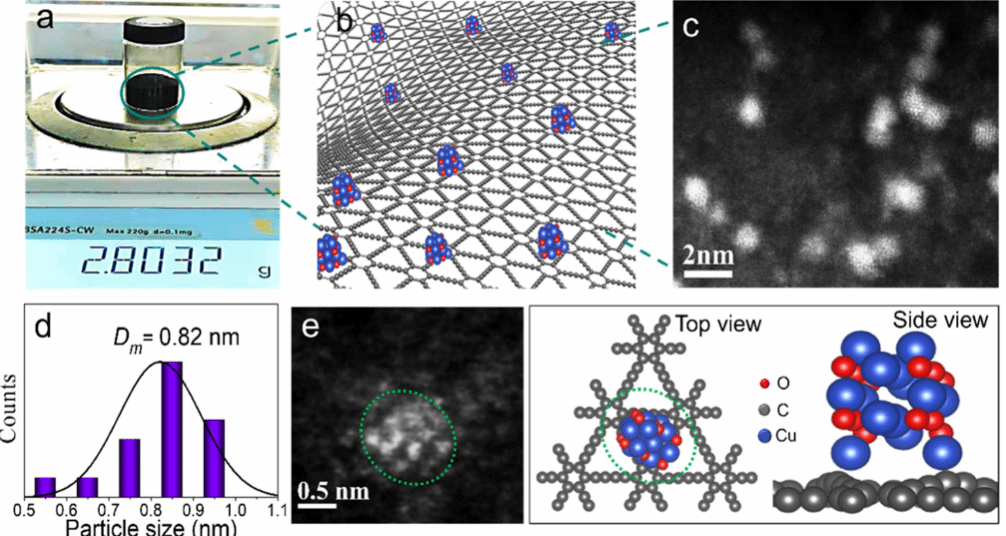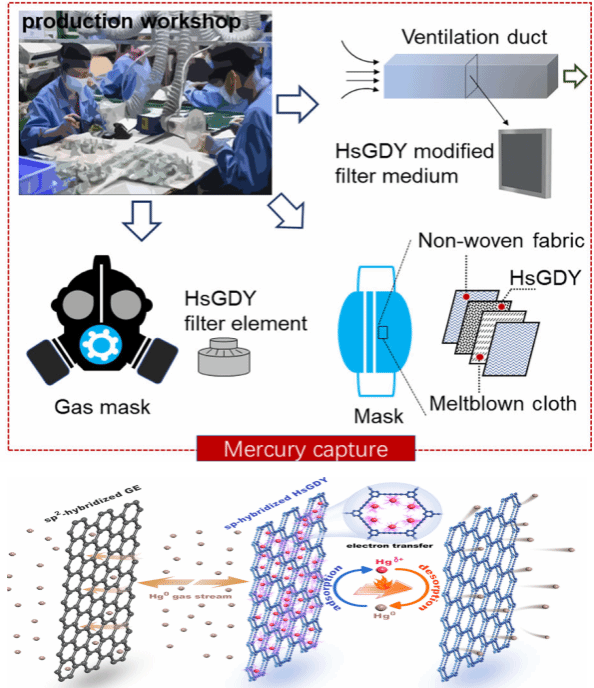Graphdiyne (GDY), as an emerging carbon allotrope, exhibits excellent properties distinct from traditional carbon materials such as graphene and carbon nanotubes due to its unique sp sp² hybrid conjugated structure. The lattice is connected by benzene ring units through - C ≡ C-alkyne bonds, forming a highly ordered two-dimensional π - conjugated network. This structure not only endows graphene acetylene with adjustable band structure and excellent electron transport performance, but also gives it a high specific surface area and uniformly distributed pore channels, providing ideal channels for the adsorption and migration of atoms, ions, and molecules.
It is worth noting that sp hybridized carbon atoms in graphitic alkynes have high unsaturation and strong chemical reactivity, which can generate stable coordination or electronic interactions with various metal atoms, effectively preventing metal aggregation and migration. This characteristic makes graphene acetylene an ideal carrier for constructing single atom catalysts (SACs). Its abundant alkyne bond sites not only provide high-density active centers for anchoring metal atoms, but also enable precise regulation of single atom electronic states and reaction pathways by adjusting the electronic structure of alkyne bonds, thereby significantly enhancing catalytic activity and selectivity. In addition, the regular pore structure and high specific surface area of graphitic acetylene contribute to achieving high loading single atom dispersion, while promoting efficient mass transfer of reactants and product desorption; Its excellent chemical stability and conductivity further ensure the long-term operational performance of the catalytic system under complex environmental conditions. Therefore, graphitic acetylene is not only a structurally innovative two-dimensional material, but also a new type of catalytic platform with designability and controllability.
Based on the significant advantages mentioned above, our team has been committed to the design and construction of new graphite alkyne based catalysts in recent years, systematically studying their intrinsic structure performance relationship, and exploring their potential applications in environmental catalysis, energy conversion, and pollution control. By regulating the electronic structure of graphene acetylene surface, constructing the metal carrier interface, and analyzing the reaction mechanism, we aim to reveal its unique catalytic mechanism and provide new theoretical basis and research ideas for the development of efficient and sustainable environmental catalysts.

Figure (1) GDY based catalyst supported on CuO nanoclusters

Figure (2) HsGDY material captures Hg0 in the air
Publish an article
◆ Chem. Sci., 2024, 15, 5061
◆ Nat. Commun. 2025, 16, 2439
◆ PNAS. 2023, 120(16), e2221002120
◆ Angew. Chem. Int. Ed., 2023, 62, e202309158
◆ J. Am. Chem. Soc., 2022, 144, 4942-4951
◆ J. Am. Chem. Soc., 2021, 143, 8720-8730
◆ Environ. Sci. Nano, 2021, 8, 1863-1885
◆ Molecules, 2020, 25, 18
◆ ACS Appl. Mater. Interfaces, 2018, 10, 17167-17174


